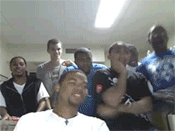Clearly, Low had observed how Belgium and Spain had struggled against Italy’s back three, both in an attacking sense and because they found it difficult to press – unsure of how to shut down the wing-backs because their full-backs were reluctant to move so high up the pitch. Low’s switch made it simpler: wing-backs would be pressed by wing-backs.
The fact he changed system was, in itself, fascinating. It’s generally the underdog that is reactive in terms of system, trying to compensate for technical deficiencies by being superior strategically, but Germany started this match as favourites. It’s also worth remembering that Low changed his system for the Euro 2012 meeting with Italy, which backfired spectacularly as Italy won 2-1, a scoreline which doesn’t reflect their dominance. It’s probably significant that Germany played a back three in a 4-1 win over Italy earlier this year.
On paper the decision made sense, although Germany were unlikely to be as organised as an Italian side accustomed to playing in this manner.








